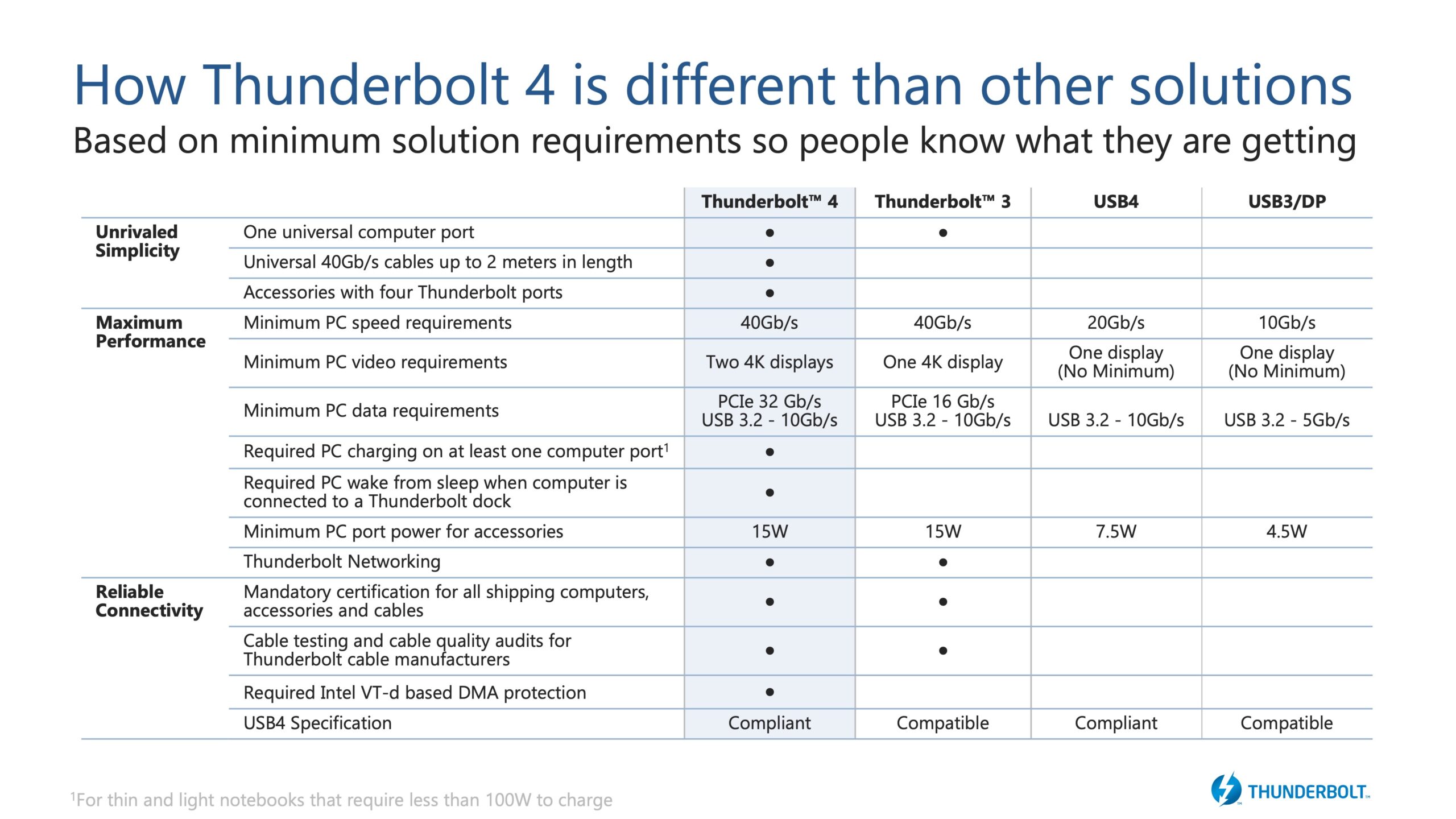
Intel has revealed new details about its next-gen ‘universal cable connectivity system,’ Thunderbolt 4.
Along with confirming that the company’s upcoming ‘Tiger Lake’ mobile PC processors would be the first to integrate Thunderbolt 4, Intel also shared that Thunderbolt 4 will bring increased minimum performance requirements and compliance with the USB4 specification.
Additionally, Intel announced that for the first time, Thunderbolt 4 will offer docks with up to four Thunderbolt ports and universal cables up to two meters in length. Intel unveiled the new Thunderbolt 4 controller 8000 series as well, which will be compatible with the “hundreds of millions of Thunderbolt 3 PCs and accessories already available.”
Finally, Intel says that Thunderbolt 4 developer kits and certification testing are now available.
Intel wants Thunderbolt 4 to be the main port for users. It relies on the USB-C style plug and works across docks, displays and plenty of other accessories. Further, Thunderbolt 4 offers more simplicity and performance for users.
USB has long been a mess of different specifications, and while the USB-C connector helped consolidate them to one port type, it left users with the difficult task of deciphering tiny glyphs beside their ports to figure out what a given connector supported. However, Intel’s solution to that seems to be telling users to “just look for the Thunderbolt.”

Ideally, one Thunderbolt 4 port and cable can replace a variety of other standards. And since Thunderbolt 4 matches or exceeds the new USB4 specifications, users can theoretically use any of the other standards with Thunderbolt 4.
Thunderbolt 4 promises consistent 40Gbps speeds and support for two 4K displays
As for the performance, Thunderbolt 4 does pack a punch. Intel says Thunderbolt 4 will “always deliver 40Gbps speeds and data, video and power over a single connection.” Those looking to get Thunderbolt 4 certification will need double the minimum video and data requirements of Thunderbolt 3. That means support for two 4K displays or one 8K display, as well as PCIe at 32Gbps for storage speeds up to 3,000MBps.
Additionally, to get certified, manufacturers will need to include support for docks with up to four Thunderbolt 4 ports, PC charging on at least one computer port, wake-from-sleep by touching the keyboard or mouse connected to a Thunderbolt dock and finally Intel’s VT-d-based direct memory access (DMA) protection, which can help prevent physical DMA attacks.

While Intel’s certification system ensures manufacturers that use Thunderbolt 4 meet the specifications and provide a consistent experience for users, it could also deter some manufacturers from including it. Thunderbolt 4 requirements also make the standard exclusive to Intel, since AMD doesn’t have the VT-d DMA protection.
Granted, PCWorld reports that if AMD rolled out an equivalent DMA protection, it would meet the requirements. However, AMD so far has held the position that its customers don’t want or need Thunderbolt. That could change as AMD’s Ryzen CPUs continue to be successful both in desktop and mobile form factors.
Intel expects to deliver the new Thunderbolt 4 controller 8000 series later this year, which will include the ‘JHL854’0 and ‘JHL8340’ host controllers for computer makers and the ‘JHL8440’ device controller for accessory makers. The first computers and accessories with Thunderbolt 4 are also expected this year, including laptops based on Intel’s Project Athena program.
MobileSyrup may earn a commission from purchases made via our links, which helps fund the journalism we provide free on our website. These links do not influence our editorial content. Support us here.


